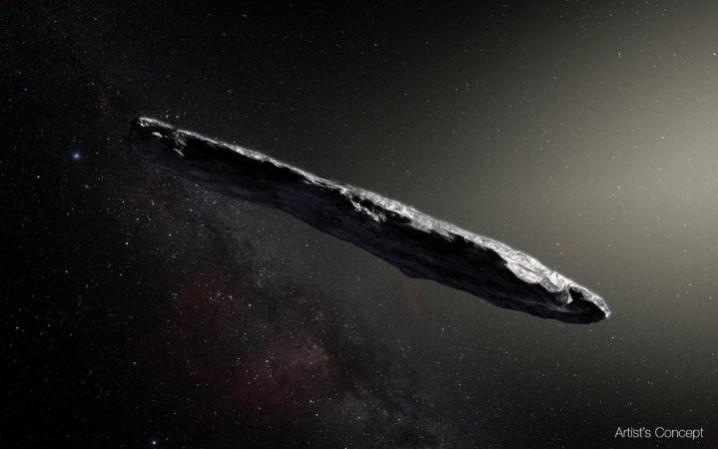
Last year, scientists spotted the first ever interstellar visitor that reached the solar system and named it Oumuamua. Initially, researchers believed that Oumuamua could be an interstellar asteroid and they speculated that it might be lurking in the universe for millions of years. However, things took an unexpected turn when Avi Loeb, a top researcher at Harvard University presented a study report stating that Oumuamua may be an artificial alien probe.
Outgassing or advanced alien technology?
Loeb, in his study report, revealed that the cigar-shaped space body gained an unexpected boost along with a shift in trajectory as it passed through the inner solar system. The Harvard researcher believes that the unexpected acceleration itself indicates that Oumuamua could be a body made with advanced alien technology.
Loeb's study report soon went viral on online and many space experts argued that they are convinced about the theory put forward by Loeb. However, Don Lincoln, a senior scientist at the Fermi National Accelerator Laboratory has revealed that the possibility of Oumuamua being an alien spaceship is possible but very unlikely.
"There is a very pedestrian explanation for this non-gravitational behavior: The object is 'outgassing,' which means various forms of ice are melting and puffing off into space. Basically, it's the same principle as a rocket ship. Near the sun, there would be lots of melting and lots of puffing. Further, from the sun, the melting would slow and that would result in less unexplained acceleration," said Don Lincoln.
Oumuamua is a weird space rock for sure
Later analysis of Oumuamua revealed some mind-blowing details about this bizarre space body. Oumuamua is just 1,000 meters long, and it seems to be more reflective than the other comets we know. Interestingly, the unique characteristic of a comet, a tail, is also missing in Oumuamua.
A few weeks back, Seth Shostak, a top researcher at the Search for Extraterrestrial Intelligence (SETI) revealed that Oumuamua could be just a millimeter thick, just like 5-10 sheets of paper stacked together. Shostak also added that there may be a number of other objects outside the solar system similar to Oumuamua, and he added that the physical nature of interstellar objects might be very different when compared to space bodies inside the solar system.
Reshaping the search for extraterrestrial aliens
As speculations surrounding Oumuamua loom up, many conspiracy theorists have started arguing that the bizarre shape and unexpected acceleration of the space body could be irrefutable proof of alien existence.
With the discovery of this new interstellar visitor, experts have also urged NASA and other space agencies to adopt different methods while looking for extraterrestrial intelligence. Earlier, experts used to send radio signals to deep space, and will later wait for a reply from alien civilizations that might be thriving somewhere in deep space.
In the NASA Technosignatures workshop conducted in September, experts suggested using a new method to locate alien life. The new alien hunting method relies on looking for technosignatures in deep space. Technosignatures can be defined as the signature left by alien civilizations in the space. Laser emissions and Dyson spheres can be also searched to locate potential alien life in the universe.
Experts also believe that life in interstellar space will be very much different when compared to the ones in the solar system. As per these space experts, a blue planet may not be the necessary criteria to find alien life, as there may be other living beings capable of living in a weird atmosphere where water may not be a pre-requisite for life.

















